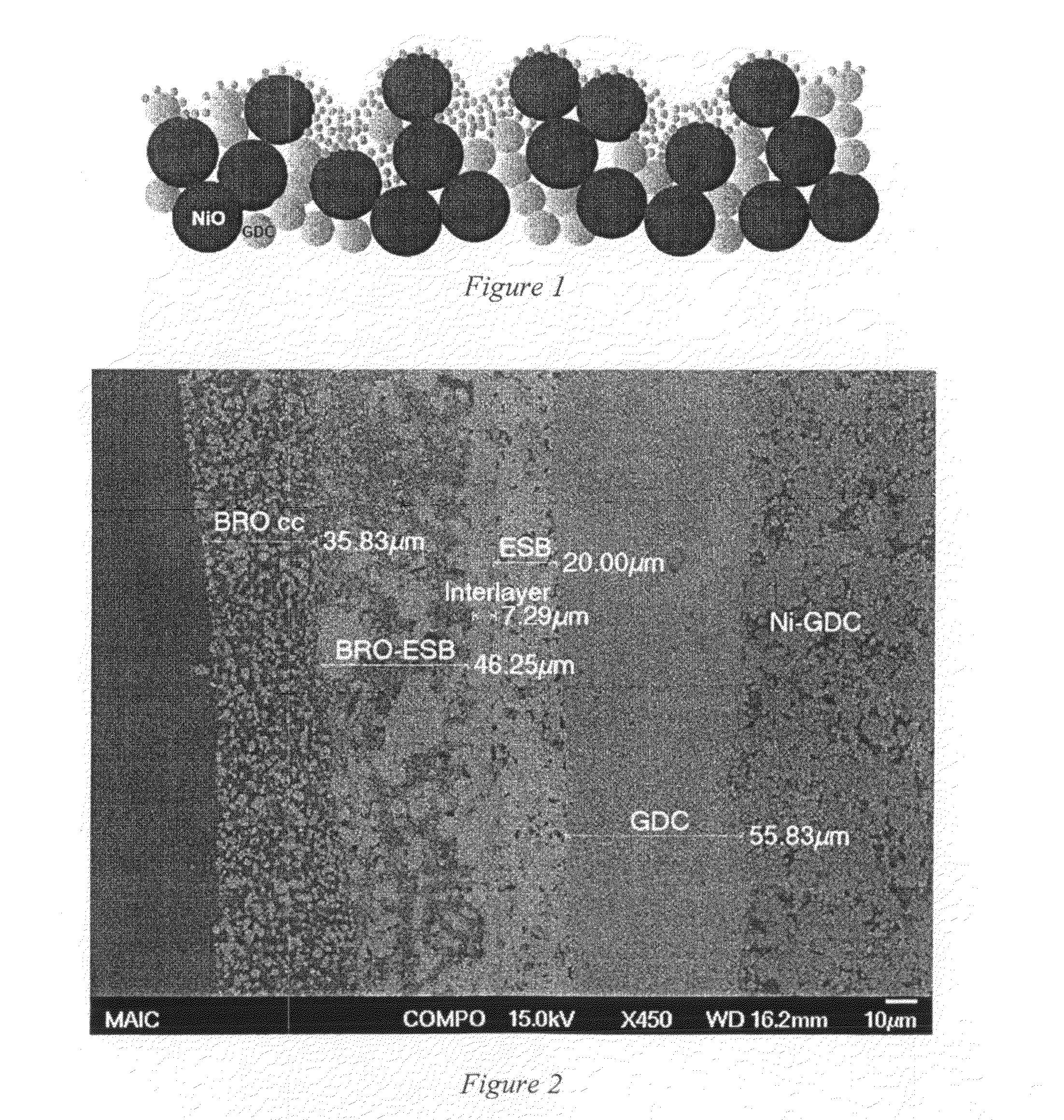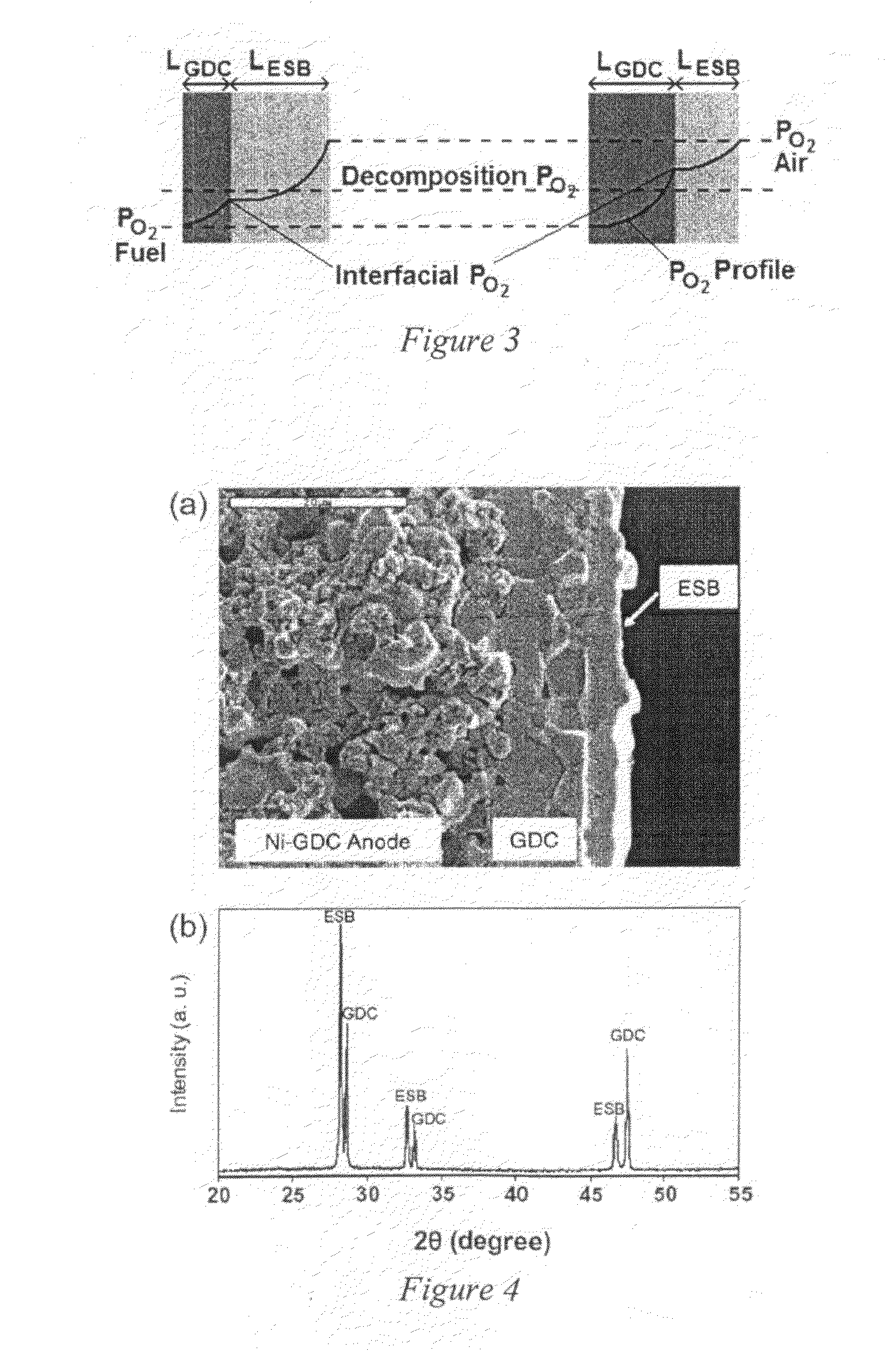Advanced materials and design for low temperature sofcs
- Summary
- Abstract
- Description
- Claims
- Application Information
AI Technical Summary
Benefits of technology
Problems solved by technology
Method used
Image
Examples
Embodiment Construction
[0028]Embodiments of the invention are directed to a SOFC where the structure of the electrolyte allows for low temperature (2O3), Inconel-Al2O3 or La(Ca)CrO3, as the interconnects. In addition to lower cost metal interconnects, the employment of lower temperatures allows the cell to be more tolerant of any thermal expansion mismatch, to be more easily sealed, to have less insulation, to consume less energy, have a more rapid startup, and to be more stable.
[0029]The bilayer electrolyte comprises a cerium oxide comprising layer and a bismuth oxide comprising layer situated such that the cerium oxide comprising layer is directed toward the anode and sufficiently thick to shield the bismuth oxide comprising layer from the reducing conditions of the anode. The bismuth oxide comprising layer is adjacent to the cathode and is greater than or equal to about 1% of the thickness of the cerium oxide comprising layer, for example 60% of the thickness of the cerium oxide comprising layer for a ...
PUM
| Property | Measurement | Unit |
|---|---|---|
| Temperature | aaaaa | aaaaa |
| Fraction | aaaaa | aaaaa |
| Fraction | aaaaa | aaaaa |
Abstract
Description
Claims
Application Information
 Login to View More
Login to View More - R&D
- Intellectual Property
- Life Sciences
- Materials
- Tech Scout
- Unparalleled Data Quality
- Higher Quality Content
- 60% Fewer Hallucinations
Browse by: Latest US Patents, China's latest patents, Technical Efficacy Thesaurus, Application Domain, Technology Topic, Popular Technical Reports.
© 2025 PatSnap. All rights reserved.Legal|Privacy policy|Modern Slavery Act Transparency Statement|Sitemap|About US| Contact US: help@patsnap.com



